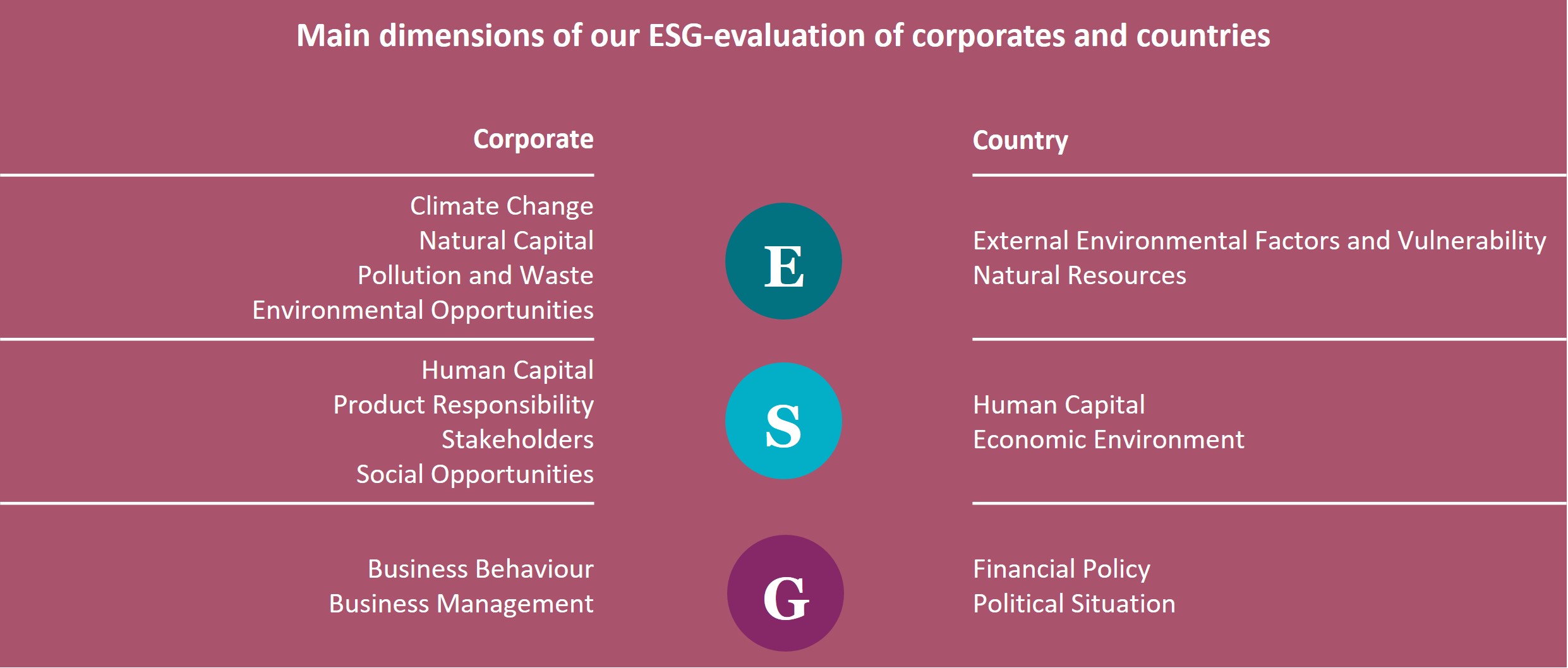
ESG Methodology at AXA IM
Understanding ESG challenges
We have witnessed a rapid growth in environmental, social and governance (ESG) integration over the past few years, but challenges remain. Defining standards, terminology, ratings and the quality and disclosure of data remains a difficult issue and with no global standard in place, investors can find it difficult to compare ESG offerings across different firms.
How do we approach these challenges at AXA Investment Managers?
At AXA Investment Managers we focus on three dimensions to the data: correct, forward looking and standardised (the latter so that it can easily be aggregated and communicated to all stakeholders).
We ensure that ESG data frameworks are validated by investment experts as well as our risk management organisation. We believe to achieve systemic change, ESG indicators should be integrated into core indices and accounting standards, making reporting more standardised and therefore comparable.
Our ESG quantitative framework
AXA IM is committed to reinforcing ESG integration by continuously increasing the coverage in terms of asset classes, developing ESG research and data solutions available to investment teams and reinforcing its own internal research capabilities.
We believe an ESG scoring system is a necessary step to synthetize all material ESG information to further discriminate between thousands of issuers. It is also the starting point to assess the ESG quality of an issuer or of a portfolio relative to its benchmark or peers.
E pillar: An analysis is made of how environmental risks can influence the performance of companies and how they manage the associated risks and opportunities (considering criteria such as contamination risk, toxic emissions, hazardous waste, environmental regulations, etc.);
S pillar: Problems related to human capital management are identified and solutions provided by companies are examined (considering working conditions, training, career development, health and safety, relations with employees and suppliers);
G pillar: Problems related to companies’ organisation and related risks are identified and analysed (considering different criteria such as the structure of the board of directors, the performance and remuneration of directors, the integrity of the audit and internal control risks, etc.);
ESG Scores are computed by the RI team based on a quantitative framework using raw scores from our ESG data providers. This ESG Scores don’t include qualitative inputs from RI Analysts or portfolio managers in order to avoid any conflict of interests.
Therefore we have developed proprietary scoring methodologies, including for corporate and sovereign issuers relying on a common framework built around the three pillars of the ESG. We also have proprietary methodologies for real estate issuers.

Our scoring methodology
The corporate scoring methodology at AXA IM is developed and maintained by the RI team. We use raw ESG company/country data from ESG research providers and cover more than 8,000 companies and 100 countries with our quantitative scoring system, ultimately providing each company/country with a score scaling from 0-10 [1].
Corporate framework
This is conducted via a five-step approach:
1. Framework foundation
This is built around three ESG pillars, with two factors identified for each pillar (see above).
2. Data providers
We conduct a thorough review of ESG data providers to select the most relevant information to address each of the key issues identified in the framework.
3. Sub and factors score
We then aggregate the scores from the first two steps and assess the severity of the controversies and how this could impact a company/country score.
4. Pillar scores
The investment universe is broken down into 16 RI sectors to better address the specificities of each issuer among peers. Specific sectorial factor weights are calibrated to compute pillar scores for each issuer.
5. ESG score
Investment universe is categorised into four geographical zones (North America / Asia Pacific developed / Europe developed / emerging). ESG scores are normalised by region (Gaussian distribution) to allow proper comparison and ensure enough discrimination. Further to this, an analytical tool is also available to help investment professionals see the score of an issuer and its history.
Sovereign framework
For sovereign issuers, we rely on ESG indicators published by recognised international sources. We distinguish two groups of countries, mature and progressing countries. For these two groups, we use the ESG pillars, but can rely on specifics indicators, considering the level of socio-economic development of these countries.
Alternative framework
In addition, proprietary scoring methodologies are in place for certain alternative asset classes such as commercial real estate loans, infrastructure and leveraged loans.
1 Source: AXA IM as of September 2019
Disclaimer
This document does not constitute investment research or financial analysis relating to transactions in financial instruments as per MIF Directive (2014/65/EU), nor should not be considered as solicitation or investment, legal or tax advice, a recommendation for an investment strategy or a personalized recommendation to buy or sell securities.
Due to its simplification, this document is partial and opinions, estimates and forecasts herein are subjective and subject to change without notice. There is no guarantee forecasts made will come to pass. Data, figures, declarations, analysis, predictions and other information in this document is provided based on our state of knowledge at the time of creation of this document. Whilst every care is taken, no representation or warranty (including liability towards third parties), express or implied, is made as to the accuracy, reliability or completeness of the information contained herein
Information about the staff of AXA Investment Managers group and / or AXA Investment Managers is only informative. We do not guarantee the fact that staff remains employed by AXA Investment Managers group and / or AXA Investment Managers and exercise or continue to exercise in AXA Investment Managers group and / or AXA Investment Managers.
Issued by AXA INVESTMENT MANAGERS PARIS, a company incorporated under the laws of France, having its registered office located at Tour Majunga, 6 place de la Pyramide, 92800 Puteaux, registered with the Nanterre Trade and Companies Register under number 353 534 506, and a Portfolio Management Company, holder of AMF approval no. GP 92-08, issued on 7 April 1992. In other jurisdictions, this document is issued by AXA Investment Managers SA’s affiliates in those countries.
Risk Warning
The value of investments, and the income they generate, can go down as well as up and investors may not get back the amount originally invested.